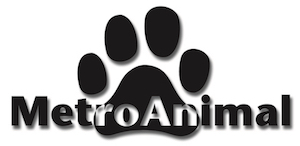|
Finding A Lost Pet
- Begin your search IMMEDIATELY. Don't wait another day for your cat or dog
to come home.
- Alert your neighborhood person-to-person. Talk to the neighbors, their
children, the mail carrier, friends, other routine service people
(sanitation people, paper delivery, etc.), lawn service personnel, and any
local veterinary clinics or grooming parlors. Tell them that your pet is lost
and you badly want him/her back.
- Make a flyer with your pet's description, name, the specific date and time lost,
and place last seen. Include a clear photograph of your pet, in color if
possible. If you don't have a good photo of your pet, take one today, just
in case, and take a new photo every few years as your pet ages. Consider
offering a reward that is large enough to be an incentive to a thief or good
Samaritan to return the animal safely to you.
- Call area schools, particularly grade schools or middle schools, and ask if
you can distribute posters and reward information among the children. Kids
spend a lot of time outdoors and are often the finders of lost pets.
- Go to -- do not call -- your local animal control department and
surrounding shelters. Personally check for your lost animal. Check
their lost-and-found boards, and put up your own lost notice. We cannot
overstress how important it is that you go personally to these places. Go
back to them every other day. Do not call them or rely on the
shelter personnel to find your animal for you.
- Notify the police.
- When describing your lost pet, verbally, in an ad, or on a flyer, be aware
there are many ways to describe animals: what is a red dog to you might be
a liver-colored or tan dog to someone else. What is an orange cat to you
could be a red cat, cream cat, tiger cat, ginger cat, or marmalade cat to
someone else. Be as precise in your language as you can, and use pictures.
If you don�t have a photo of your own pet, you might check books on cat and
dog breeds for a similar photo.
- Display flyers at grocery stores, veterinary clinics, grooming
parlors, beauty parlors, or any other place you can within a one- to
two-mile radius of the place where the animal was last seen. Cover areas
where people gather outdoors: parks, swimming pools, ball fields, jogging
tracks, farmers' markets, ice cream stands, etc. If you make street signs, be
sure they are larger and sturdier than notebook-sized paper (poster board,
foam core, or cardboard) and can be clearly read from passing cars. People rarely are
going to park their cars and get out to read a lost pet sign. Make
the wording large and dark.
- Place a lost pet ad in your local papers. One week we saw a lost cat ad
and a found cat ad in the same paper describing the same cat. That cat
probably got home safely.
Finding Lost Pets:Tip Sheets
from the Lost Pet Partnership web site.
Back to top
|
